
 (732) 246-1377
(732) 246-1377
 (732) 246-1377
(732) 246-1377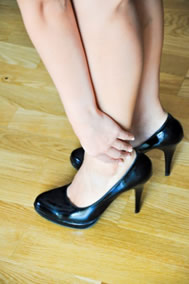 A study published by the Journal of Applied Physiology has determined that long-term high heel use can have detrimental effects on the legs’ muscles, such as muscle strain and muscle fatigue. According to the study’s abstract, long-term high heel use has been found to “shorten medial gastrocnemius muscle fascicles and increase Achilles tendon stiffness.” The study’s results are consistent with reports that high heel wearers often experience discomfort, pain, and tiredness. It also suggests that “long-term high heel use may compromise muscle efficiency in walking.”
A study published by the Journal of Applied Physiology has determined that long-term high heel use can have detrimental effects on the legs’ muscles, such as muscle strain and muscle fatigue. According to the study’s abstract, long-term high heel use has been found to “shorten medial gastrocnemius muscle fascicles and increase Achilles tendon stiffness.” The study’s results are consistent with reports that high heel wearers often experience discomfort, pain, and tiredness. It also suggests that “long-term high heel use may compromise muscle efficiency in walking.”
High heels have a history of causing foot and ankle problems. If you have any concerns about your feet or ankles, contact one of our podiatrists from Livingston Footcare. Our doctors can provide the care you need to keep you pain-free and on your feet.
Effects of High Heels on the Feet
High heels are popular shoes among women because their style and societal appeal. Despite this, they can still cause many health problems if worn too frequently.
What parts my body will be affected by high heels?
Ankle Joints
Achilles Tendon – may shorten and stiffen with prolonged wear
Balls of the Feet
Knees – heels cause the knees to bend constantly, creating stress on them
Back – they decrease the spine’s ability to absorb shock, which may lead to back pain. Also, the vertebrae of the lower back may compress.
What kinds of foot problems can develop from wearing high heels?
Corns
Calluses
Hammertoe
Bunions
Morton’s Neuroma
Plantar Fasciitis
How can I still wear high heels and maintain foot health?
If you want to wear high heeled shoes, make sure that you are not wearing them every day, as this will help prevent long term physical problems. Try wearing thicker heels as opposed to stilettos to distribute weight more evenly across the feet. Always make sure you are wearing the proper shoes for the right occasion, such as sneakers for exercising. If you walk to work, try carrying your heels with you and changing into them once you arrive at work. Adding inserts to your heels can help cushion your feet and absorb shock. Full foot inserts or metatarsal pads are available.
If you have any questions please feel free to contact our offices located in North Brunswick, NJ. We offer the newest diagnostic tools and technology to treat your foot and ankle needs.
For hundreds of years, women have been wearing various kinds of high-heels for aesthetic reasons. Women who wear high-heels appear to be taller and have longer and thinner legs, and the wearer’s gait and posture changes. Though high-heels have had an association with femininity and have kept them popular over the years, there are definite health problems caused by wearing them too frequently.
The motion of the ankle joints is limited when heels are worn. The ankle joint is very important to the body when it comes to walking. Because of their location, these joints have a great deal of weight put on them. Thus, it is very important to keep them as healthy as possible. The Achilles tendon is the main tendon in the ankle. Wearing high-heels too often, studies have shown, can cause the calf muscle and Achilles tendon to shorten and stiffen. This can cause problems when shoes without heels are worn.
By putting a great deal of pressure on the ball of the foot and by forcing the toes into a small toe box, high-heels can cause or may worsen many foot problems. These include corns, hammertoe, bunions, Morton’s neuroma and plantar fasciitis.
Not only does wearing very high-heels regularly have negative effects on the feet, the rest of the body can suffer as well. The knees, one of the most important joints in the entire body, can be affected by wearing high-heels. High-heels causes the knees to stay bent all the time. Also, it can cause them to bend slightly inward as well. Doctors believe that women can suffer from osteoarthritis later in life because of constantly walking like in high-heels. By limiting the natural motion of the foot during walking, high-heels also cause an increased in stress on the knees.
Similarly, high-heels can cause the back to go out of alignment. If high-heels are worn constantly, the spine’s ability to absorb shock can cause continued back pain. They can compress the vertebrae of the lower back, and can overuse the back muscles.
However, this is not to say that high-heels can never be worn. If worn occasionally and not often, they will not cause serious problems. They should not be worn every day. It’s important to wear them modestly to avoid the long-term physical health problems of the feet, knees, ankles, and back mentioned above.
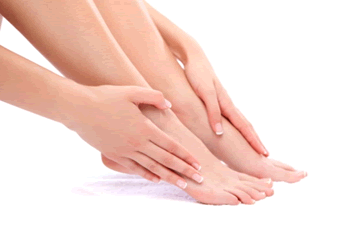 Plantar fasciitis is the most common foot condition that patients go to a podiatrist to seek help for. Plantar fasciitis occurs when the ligament in the arch of the foot becomes inflamed; this is usually caused by overuse. Many people who struggle with the condition are able to treat it with ease. There are over-the-counter solutions geared toward treating people with plantar fasciitis. Some of these solutions include arch supports and anti-inflammatory medications.
Plantar fasciitis is the most common foot condition that patients go to a podiatrist to seek help for. Plantar fasciitis occurs when the ligament in the arch of the foot becomes inflamed; this is usually caused by overuse. Many people who struggle with the condition are able to treat it with ease. There are over-the-counter solutions geared toward treating people with plantar fasciitis. Some of these solutions include arch supports and anti-inflammatory medications.
Plantar fasciitis can be very painful and inconvenient. If you are experiencing heel pain or symptoms of plantar fasciitis, contact one of our podiatrists from Livingston Footcare. Our doctors can provide the care you need to keep your pain free and on your feet.
What is Plantar Fasciitis?
Plantar fasciitis is the inflammation of the thick band of tissue that runs along the bottom of your foot, known as the plantar fascia, and causes mild to severe heel pain.
What Causes Plantar Fasciitis?
· Excessive running
· Non-supportive shoes
· Overpronation
· Repeated stretching and tearing of the plantar fascia
How Can It Be Treated?
· Conservative measures – anti-inflammatories, ice packs, stretching exercises, physical therapy, orthotic devices
· Shockwave therapy – sound waves are sent to the affected area to facilitate healing and are usually used for chronic cases of plantar fasciitis
· Surgery – usually only used as a last resort when all else fails. The plantar fascia can be surgically detached from the heel
While very treatable, plantar fasciitis is definitely not something that should be ignored. Especially in severe cases, speaking to your doctor right away is highly recommended to avoid complications and severe heel pain. Your podiatrist can work with you to provide the appropriate treatment options tailored to your condition.
If you have any questions please feel free to contact our office located in in North Brunswick, NJ. We offer the newest diagnostic tools and technology to treat your foot and ankle needs.
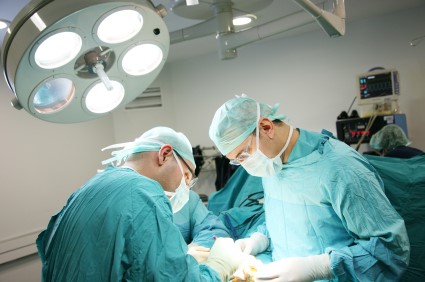 Italian footballer Rolando Mandragora recently underwent surgery on a metatarsal injury. The surgery aimed to reduce the synthesis of the fifth metatarsal in his left foot. The surgeon who performed the operation announced that everything was successful and that Mandragora can start rehabilitation soon. However, he isn’t expected to make a return until about three or four months.
Italian footballer Rolando Mandragora recently underwent surgery on a metatarsal injury. The surgery aimed to reduce the synthesis of the fifth metatarsal in his left foot. The surgeon who performed the operation announced that everything was successful and that Mandragora can start rehabilitation soon. However, he isn’t expected to make a return until about three or four months.
Foot surgery is sometimes necessary to fix a foot ailment. To learn more, contact one of our podiatrists from Livingston Footcare. Our doctors can provide the care you need to keep you pain-free and on your feet.
When Is Surgery Necessary?
Foot and ankle surgery is generally reserved for cases in which less invasive, conservative procedures have failed to help with the problem. Some of the cases in which surgery may be necessary are:
● Removing foot deformities like bone spurs and bunions
● Severe arthritis that has caused bone issues
● Cosmetic reconstruction
What Types of Surgery Are There?
The type of surgery you receive will depend on the nature of the problem you have. Some of the possible surgeries include:
● Bunionectomy for painful bunions
● Surgical fusion for realignment of bones
● Neuropathy decompression surgery to treat nerve damage
Benefits of Surgery
Although surgery is usually a last resort, it can provide more complete pain relief compared to non-surgical methods and may allow you to finally resume full activity.
Surgical techniques have also become increasingly sophisticated. Techniques like endoscopic surgery allow for smaller incisions and faster recovery times.
If you have any questions please feel free to contact our office located in North Brunswick, NJ. We offer the newest diagnostic and treatment technologies for all your foot and ankle needs.
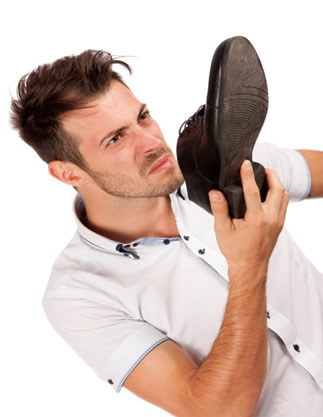 There are home remedies that can be used to treat sweating of the feet. Applying talcum powder, or soaking your feet in saltwater or vinegar can help stop your feet from sweating. However, a company called Carpe Lotion has released a product that can treat the smell that sweat produces. People with hyperhidrosis, or excessive sweating, use the product twice a day every day in order to treat the condition..
There are home remedies that can be used to treat sweating of the feet. Applying talcum powder, or soaking your feet in saltwater or vinegar can help stop your feet from sweating. However, a company called Carpe Lotion has released a product that can treat the smell that sweat produces. People with hyperhidrosis, or excessive sweating, use the product twice a day every day in order to treat the condition..
If you have any concerns about your feet or ankles contact one of our podiatrists from Livingston Footcare. Our doctors will treat your foot and ankle needs.
Hyperhidrosis of the Feet
Hyperhidrosis is a rare disorder that can cause people to have excessive sweating of their feet. This can usually occur all on its own without rigorous activity involved. People who suffer from hyperhidrosis may also experience sweaty palms.
Although it is said that sweating is a healthy process meant to cool down the body temperature and to maintain a proper internal temperature, hyperhidrosis may prove to be a huge hindrance on a person’s everyday life.
Plantar hyperhidrosis is considered to be the main form of hyperhidrosis. Secondary hyperhidrosis can refer to sweating that occurs in areas other than the feet or hands and armpits. Often this may be a sign of it being related to another medical condition such as menopause, hyperthyroidism and even Parkinson’s disease.
In order to alleviate this condition, it is important to see your doctor so that they may prescribe the necessary medications so that you can begin to live a normal life again. If this is left untreated, it is said that it will persist throughout an individual’s life.
A last resort approach would be surgery, but it is best to speak with your doctor to find out what may be the best treatment for you.
If you have any questions, please feel free to contact our office in North Brunswick, NJ. We offer the newest diagnostic and treatment technologies for all your foot care needs.
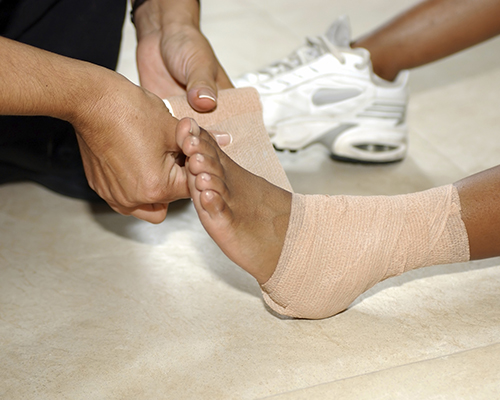 Approximately 28,000 people sprain their ankle in the United States each day. About 55% of those people who sprain their ankle never go to a doctor to seek treatment for their injury. Consequently, a lot of these untreated ankle sprains will recur in the future because they haven’t been properly treated. Ankle sprains tend to be most common among active people, but they can also be caused by walking on uneven surfaces or tripping on a flight of stairs. It is very important to not ignore an ankle sprain, because it could be a much more serious injury than you expect.
Approximately 28,000 people sprain their ankle in the United States each day. About 55% of those people who sprain their ankle never go to a doctor to seek treatment for their injury. Consequently, a lot of these untreated ankle sprains will recur in the future because they haven’t been properly treated. Ankle sprains tend to be most common among active people, but they can also be caused by walking on uneven surfaces or tripping on a flight of stairs. It is very important to not ignore an ankle sprain, because it could be a much more serious injury than you expect.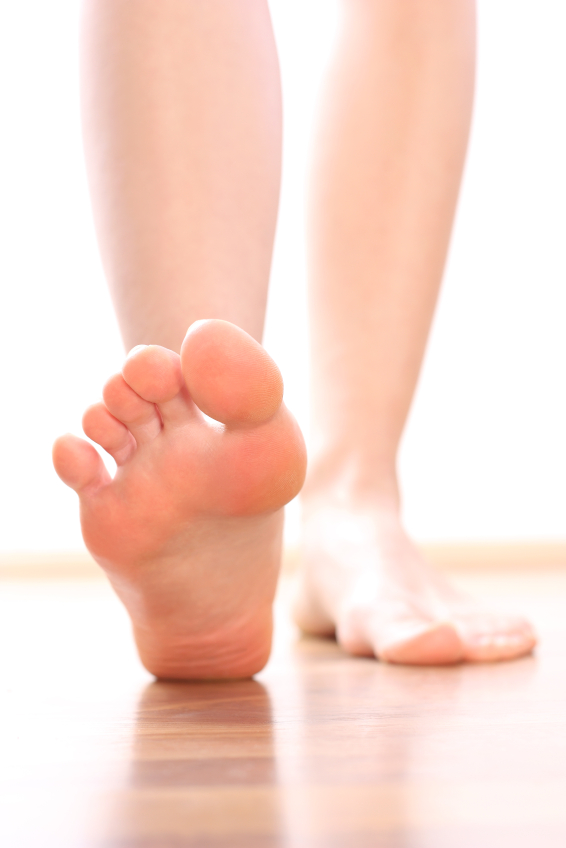 Plantar warts develop on the bottom of our feet as round growths on the skin, described as having brown dots. Warts are caused by the papillomavirus and usually go away on their own, typically not requiring any treatment. Avoid picking at the wart to prevent infection. A potential option for treating your wart is by covering it up with tape, as “warts deprived of air and sun exposure sometimes die without the need for topical treatments.”
Plantar warts develop on the bottom of our feet as round growths on the skin, described as having brown dots. Warts are caused by the papillomavirus and usually go away on their own, typically not requiring any treatment. Avoid picking at the wart to prevent infection. A potential option for treating your wart is by covering it up with tape, as “warts deprived of air and sun exposure sometimes die without the need for topical treatments.”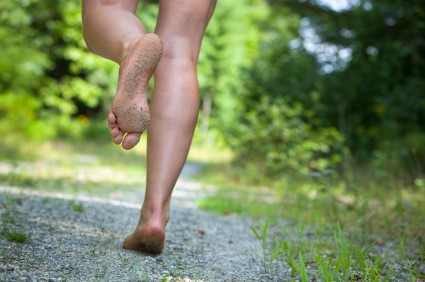 Although shoes were created in order to protect our feet, humans were made to run barefoot. Researchers believe that barefoot running is more efficient than running with shoes. Barefoot running improves running posture and helps fight pronation. Although barefoot running provides a lot of benefits, shoes have become a necessity in our society due to the fact that they protect us from disease.
Although shoes were created in order to protect our feet, humans were made to run barefoot. Researchers believe that barefoot running is more efficient than running with shoes. Barefoot running improves running posture and helps fight pronation. Although barefoot running provides a lot of benefits, shoes have become a necessity in our society due to the fact that they protect us from disease.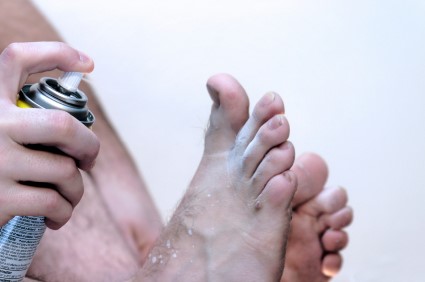 Athlete’s foot can be very problematic for people who suffer from it. It is an itchy and painful fungal infection, but there are preventative measures you can take to avoid getting it. In order to protect your feet from athlete’s foot, you should use soap and water to wash your feet daily. When you finish washing your feet, it is important to dry them thoroughly, especially between the toes. Furthermore, you should always wear sandals in public locker rooms and restrooms in order to protect your feet from fungus. Lastly, you should try to wear shoes that are lightweight and breathable in order to maintain healthy feet.
Athlete’s foot can be very problematic for people who suffer from it. It is an itchy and painful fungal infection, but there are preventative measures you can take to avoid getting it. In order to protect your feet from athlete’s foot, you should use soap and water to wash your feet daily. When you finish washing your feet, it is important to dry them thoroughly, especially between the toes. Furthermore, you should always wear sandals in public locker rooms and restrooms in order to protect your feet from fungus. Lastly, you should try to wear shoes that are lightweight and breathable in order to maintain healthy feet.